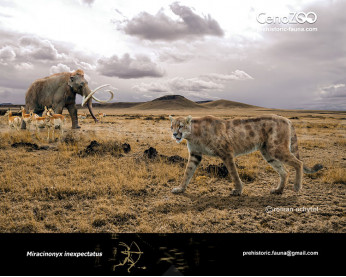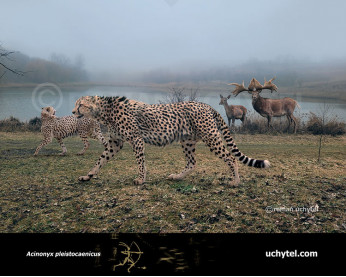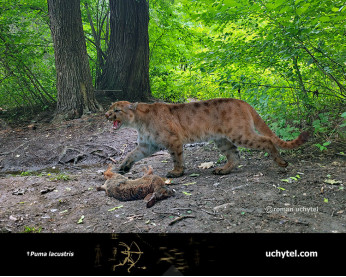Giant cheetah (Acinonyx pardinensis)
6161Giant cheetah (Acinonyx pardinensis Croizet & Joubart, 1828)
Order: Carnivora
Family: Felidae
Time period: Early Pliocene - late Pleistocene of Eurasia
Size: 2 m in length, 100 cm in height, 90 kg of weight.
The Giant Cheetah (Acinonyx pardinensis) is an extinct species of big cat; its closest living relative is the modern Cheetah. The lifestyle and physical characteristics of the Giant Cheetah were probably similar to that of its modern relative, except that the Giant Cheetah was the height of a lioness at the shoulder (100 cm), but due to light build, weighed considerably less. It was roughly twice the size of today's cheetahs, putting it at around 100 kilograms, and about 200 centimetres from head to rump, not including a 140 centimetres tail. Its reconstructed shoulder height was at 90 centimetres.
It was a specialized sprinter with long limbs just like the modern cheetah and a back that is slightly longer. This back is highly flexible and allowed great propulsion during a sprint. Giant Cheetahs were present in Europe during the Early and Middle Pleistocene. The Giant Cheetah was found in Germany, France, and also in China and India. European cheetahs occurred alongside jaguars and leopards at some Middle Pleistocene localities, and it is possible that competition among the three contributed to the cheetah's decline. Its large mass and more worn claws (when compared to modern cheetahs) suggest it was less adapted to climbing, an ability which would continue to evolve until modern-day cheetahs appeared.
Giant cheetah (Acinonyx pardinensis Croizet & Joubart, 1828)
Order: Carnivora
Family: Felidae
Time period: Early Pliocene - late Pleistocene of Eurasia
Size: 2 m in length, 100 cm in height, 90 kg of weight.
The Giant Cheetah (Acinonyx pardinensis) is an extinct species of big cat; its closest living relative is the modern Cheetah. The lifestyle and physical characteristics of the Giant Cheetah were probably similar to that of its modern relative, except that the Giant Cheetah was the height of a lioness at the shoulder (100 cm), but due to light build, weighed considerably less. It was roughly twice the size of today's cheetahs, putting it at around 100 kilograms, and about 200 centimetres from head to rump, not including a 140 centimetres tail. Its reconstructed shoulder height was at 90 centimetres.
It was a specialized sprinter with long limbs just like the modern cheetah and a back that is slightly longer. This back is highly flexible and allowed great propulsion during a sprint. Giant Cheetahs were present in Europe during the Early and Middle Pleistocene. The Giant Cheetah was found in Germany, France, and also in China and India. European cheetahs occurred alongside jaguars and leopards at some Middle Pleistocene localities, and it is possible that competition among the three contributed to the cheetah's decline. Its large mass and more worn claws (when compared to modern cheetahs) suggest it was less adapted to climbing, an ability which would continue to evolve until modern-day cheetahs appeared.

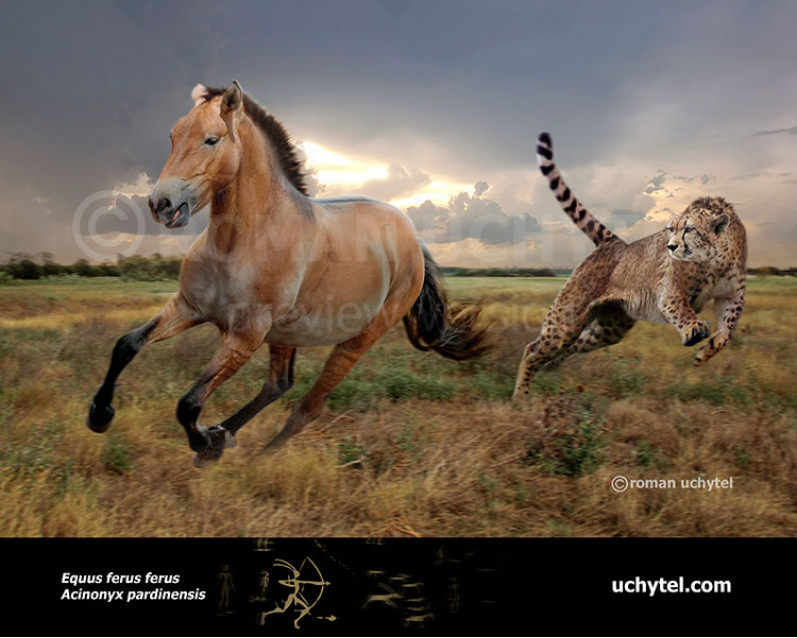
-797x638.jpg)
1-797x638.jpg)
-797x638.jpg)
1-797x638.jpg)
-797x638.jpg)
-1-797x638.jpg)

-70x56.jpg)
1-70x56.jpg)
-70x56.jpg)
1-70x56.jpg)
-70x56.jpg)
-1-70x56.jpg)
-346x277.jpg)
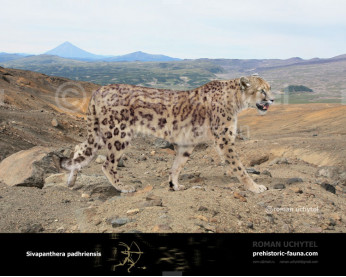
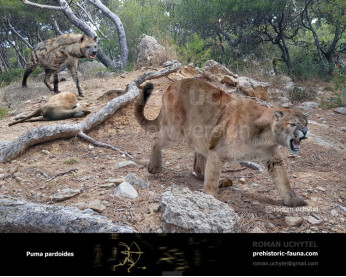
-346x277.jpg)
